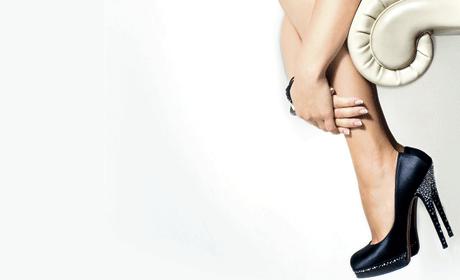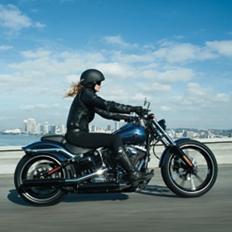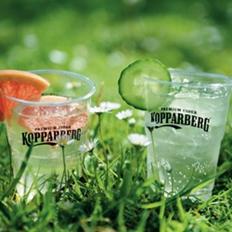Find your feminine side
Brands that have historically had a male-dominated primary audience are working out how to communicate to women – without alienating men.

Women make the majority of purchase decisions
“As a company we’re quite macho. The culture’s quite male. We’re good at knowing what men want but when it comes to targeting women, we’re a bit less sure. And we’re worried that if we do something for women, our male customers won’t like us as much.”
If this sounds familiar, you are not alone. Women control over 70 per cent of global spending according to the Boston Consulting Group, yet many brands where men have historically been the primary target audience are finding it hard to reach women and with the right tone of voice.
The comment comes from an automotive marketer quoted in ‘The Daring Book for Boys in Business: A Toolkit for Marketing to Women in Male Companies and Categories’ by Jane Cunningham and Philippa Roberts.
This is not about creating separate brands just for women – although that is sometimes an option – it is more about a company’s marketing being inclusive when it isn’t used to being so.
Brands such as Nokia, Harley-Davidson and Pernod Ricard, which owns brands such as Chivas Regal and Absolut, are all realising the opportunity of targeting both men and women in marketing communications, although the trigger behind the move differs dramatically for each brand.
Pernod Ricard’s new strategy of targeting female drinkers will be piloted in China but rolled out globally if it is successful, as Marketing Week revealed last month.
“When you see the other established categories slowing down, we have to find new momentum and [targeting female consumers] is one of those,” says Horace Ngai, managing director of Pernod Ricard China, who spoke to Marketing Week at its Global Capital Markets Day in Beijing last month. Ngai also admits that the company is intrinsically skewed towards men because its two key categories are whiskey and cognac.
Overall sales growth in China has also dropped slightly, which spurred the company to look for ‘new momentum’ by targeting female drinkers. Sales in the region are currently growing at a rate of 8 per cent year on year, down from 15 per cent in the last financial year.
The new territory of targeting female drinkers also relates to external factors, including reaching consumers who drink at home – and in China in particular, the rise of female-only socialising, giving them a chance to choose the drinks they consume.

Harley-Davidson holds events such as ladies’ days and fashion shows to reach women motorcyclists
The way a brand markets to women can often boil down to these external factors within each region. For example, Harley-Davidson’s target market in the UK differs from its audience in Europe.
A spokesperson from Harley-Davidson says: “The demographic of motorcyclists as a whole and then specifically Harley owners varies greatly, even within Europe. If you travel to a Harley event in Spain you will see young customers, both male and female, but in the UK motorcyclists are mostly male with an average age of 47.”
However, this doesn’t mean the UK marketing is skewed towards older men: the brand still accounts for female consumers through initiatives that specifically target women. In the UK, at individual dealer level, there are ladies’ day events and female-focused fashion shows. Although the bikes are not cheap, there is clearly an audience for them: 1.1 million women in the UK earn a salary over £35,000 and 1 million have more than £50,000 in savings.
Other brands find marketing that appeals to both sexes is more effective, yet there is a fine line to tread to make sure that men are not alienated. Rob Calder, head of marketing at cider brand Kopparberg, says the alcohol market is sensitive to this. “In my experience, it’s always been the case that you are better to err on the side of male appeal rather than female.

Kopparberg was conscious of not being too ‘girly’ in its marketing to appeal to both sexes
“You can appeal to female drinkers with brands that are more masculine but you tend to wipe out any appeal to blokes if you become too girly. It works one way but not the other unfortunately.”
Many brands are unconscious of the fact that their marketing is male-focused because of a historical and traditional approach to it that assumes men make the purchasing decision in that category, according to Cunningham (see viewpoint below).
She says: “Many companies are unaware of the unconscious biases they have internally and until awareness and consciousness is built around those biases it’s very difficult for companies to change.
“They are not consciously prejudiced, anti-women or sexist, they just don’t realise that a lot of their default modes, ways of operating and beliefs around what does and doesn’t work in marketing comes from a very masculine perspective.”
In certain categories there has been a shift in terms of the gender of the key consumer; for example, Nokia found that smartphone ownership was dominated by women.
Nokia senior consumer insights manager Elizabeth Southwood says: “We were aware of technology brands alienating women with their tone and messaging but also of the fact that increasing numbers of ladies were adopting smartphones which has now overtaken men, 58 per cent to 42 per cent, as well as other tech.”
Southwood admits that the technology industry historically can be guilty of being quite male-focused, by reeling off specifications instead of what a product actually does and how it can fit into someone’s daily life – which is relevant for women, but also for men.

Nokia Remarkable Women promo
Nokia’s approach to this is the Remarkable Women campaign, which equipped a community of powerful and busy women with a Nokia Lumia. They then received guidance on how the phone would fit into their lives (see Q&A below).
EBay advertising also veered along the consumer insights path and found some surprising results in relation to what categories men and women buy on the site.
On eBay, more than half (51 per cent) of the people that shop for baking supplies and equipment are men and 38 per cent of shoppers
in the video games category are female.
Head of eBay advertising in the UK Phuong Nguyen says: “Brands are continually surprised at how these stereotypes are changing. I’m surprised by the briefs that we get from video game clients who are very narrow-minded in their gender thinking about who their target audience are.
“It’s very important, given the velocity at which consumer behaviour changes, that brands are taking into account these kinds of insights.”
Charmaine Eggberry, director at O2’s start-up accelerator Wayra, would like greater representation of females in the start-up community and believes that it is a confidence issue where more men than women believe they can successfully start a business.
This is backed up by statistics from The Women’s Enterprise Task Force, which shows that businesses owned by women access an average of £10,000 funding compared with £15,000 for men. In addition, women tend to be charged higher interest rates on loans – an average of 2.9 per cent compared with a 1.9 per cent average for men.
This is despite research from MBA Online showing that while female tech entrepreneurs begin with just 12 per cent on average of the funding capital of their male counterparts, they go on to have 12 per cent higher revenues.
Eggberry says: “There is a perception that the start-up world is very male oriented but the reality is these companies are more likely to survive if they are female-founded companies. From raw start-ups to [fully-fledged] companies, they make that transition better.
“Fewer women believe they are capable of starting and running a business, whether it’s tech or anything else. There is work to be done: getting people excited about the tech world starts at school, getting them to stay in the tech world is about the environment and getting them to be successful in the tech world is about breaking down the stereotypes about what makes a successful entrepreneur and start-up.”
Ensuring there is a gender balance in your audience can often come down to how you market your brand or, in the case of Kopparberg, your portfolio. The cider brand has different flavours that appeal to both men and women.
Calder says: “This year we have decided to focus on the product more. It would have been easy for us to go down the route of talking about fruit flavours that lean more towards female consumers but we have found a way to strike a balance between female and masculine appeal and talking about the variety of cider that we produce.”
It is also important that the channels used relate to what you are trying to achieve as more consumers look for personal experiences.
Belinda Parmar, author of ‘Little Miss Geek’, a book about women and the tech industry, believes female consumers do not believe the big brand campaigns and to appeal to them, brands should try ‘grass-roots’ marketing.
“Paying a lot of money for superstars, as with the case of Alicia Keys for Blackberry, is very much seen [by women] as a marketing ploy,” says Parmar. “Grass-roots marketing, getting influential women on the ground to talk about your product is far more effective than slapping your logo on a billboard.”
Nokia used insights showing that women seek reassurance from their ‘circles of trust’ and that authenticity is very important for its Remarkable Women campaign.
Southwood says: “We didn’t specifically ask the community to tell their friendship groups about the Remarkable Women Community or about their Nokia Lumia but they have because both have become tools for them. This is a powerful recipe and is working with increased recommendation rates for our brand and products. We should be where women are, and engage with them on an authentic level.”
For some health and beauty brands, where the audience has historically been more feminine than masculine, there is also a shift.
Unilever deodorant brand Sure, for example, has moved away from pretty advertising images to those that present women as strong, using the line ‘unapologetically dominant’ for its Maximum Protection product.
The brand is aiming to drive awareness of the product in relation to ‘high sweat’ moments to increase trials of the new deodorant. Through BlisMedia, it is sending ads to the mobile and tablet devices of women over 20 years old both at UK Wi-Fi locations, for example coffee shops, restaurants and department stores, and through 3G networks at gyms, salons, on trains and at Boots and Superdrug. The ads are mainly targeted to relevant female health and beauty sites.
Meanwhile, Sure’s product for men is currently promoting itself via a tie up with Formula 1, giving people the chance to drive the Lotus team car.
While there are obvious reasons why deodorant brands have separate products for men and women, a simple gender split does not work for other categories.
Pernod Ricard managing director of brands Thierry Billot says this is the case for alcohol. “Women don’t want to see a product that has been developed for them only because they have the impression of being put in a ghetto. As far as they’re concerned as men do.
“We are very careful not to treat women as a separate group. It’s more of a question of picking up on the brand’s taste profile, which would have a good level of acceptance by women.”
Judging by the examples of the brands that have already started to make a considered approach to include women in their marketing focus, it is clear that marketing to women does not have to be at the expense of alienating male consumers.
It’s about striking the right balance, so that women are not ruled out altogether by male-dominated categories, especially those that have either consciously or unconsciously failed to realise the commercial potential of female purchasing power.
Q&A
Elizabeth Southwood
Senior consumer insights manager Nokia
Marketing Week (MW): Would you say that the technology industry is quite male-focused in terms of marketing communications?
Elizabeth Southwood (ES): The technology industry historically can be guilty of being quite male-focused, messaging what the technology is by reeling off specifications instead of what it actually does.
MW: What were the main ideas and reasons for Nokia’s Remarkable Women campaign?
ES: We wanted to engage with women on a different level, to have a point of view, and wanted to use a challenging spirit. We launched the Remarkable Women Community specifically focusing on women who were tackling conventions and breaking down barriers in their chosen field. It’s a diverse group, from a mayoral candidate to chief executives, a magician, comedian, DJ, beatboxer, playwright and many more.
The key aim was to bring like-minded women together, equipping them with a Nokia Lumia, giving them the opportunity to network and encourage others to carve their own paths as well as making their day a bit easier with technology.
MW: How did the Remarkable Women campaign make technology more accessible to women?
ES: The important element was equipping each participant with a Nokia Lumia, setting up their phone on an individual basis, talking them through how the phone works as well as regular updates on new apps and services. The women are so busy and always on the go and the Nokia Lumia has become integral to their daily lives; with many using the maps to navigate to meetings, syncing with their PCs, emailing and taking photos of the jobs they’re working on. It’s become more of a life tool than a phone. As a result, they’re recommending it to their friends, making it accessible to even more people.
MW: How important is it for products and services to have a universal appeal?
ES: Look at successful technology brands – they aren’t designed for a specific gender, they have universal appeal. The rise of the tablet market demonstrates this. Likewise advertising shouldn’t alienate a demographic.
MW: What’s next for the project?
ES: We’re partnering with event organisers Inspirational You on several upcoming events supporting the Leading Women panel at Birkbeck University this month, which we’re excited about. We’re aiming to do more of these speaker panels, alongside growing our Twitter community and our offline network of women.
Viewpoint
Jane Cunningham co-author of The Daring Book for Boys in Business
It didn’t really occur to us that an inevitable consequence of targeting women would be alienating men. We were surprised by the anxiety that went on in these organisations. The examples they had in their heads were from the school of pink marketing – very traditionally masculine to the very traditionally feminine.
Many companies are unaware of the unconscious biases they have: internally they don’t realise that a lot of their default modes, ways of operating and beliefs around what does and doesn’t work in marketing come from a very masculine perspective. Until they challenge themselves to look at what the category might look like from a female point of view, it’s going to be very difficult for them to move the game on.
People are not going to reach out to women because it’s a nice thing to do or right thing to do. Companies operate on the basis of commercial opportunities and how to realise the potential of the business. The opportunity is enormous and is worth spending a lot of time agonising over, working out how to make the most of the opportunity even if it is difficult.
There is a way of doing it that means you can hold on to your masculine audience but will actually succeed in developing the brand into something more 21st century, more exciting and bigger because it can appeal to women too. There is a bit of anxiety around change that it will somehow shrink the brand, but the aim is making it bigger, better and more exciting for everybody – including men.









